Abstract
This paper describes an experimental demonstration of stimulus equivalence classes consisting entirely of auditory stimuli. Stimuli were digitized arbitrary syllables (e.g., "cug," "vek") presented via microcomputer. Training and testing were conducted with a two-choice auditory successive conditional discrimination procedure. On each trial, auditory samples and comparisons were presented successively. As each comparison was presented, a response location (a rectangle) appeared on the computer screen. After all stimuli for a trial were presented, subjects selected one of the response locations. Six subjects acquired the conditional discrimination baseline, 4 subjects demonstrated the formation of three-member auditory equivalence classes resulting from sample-S+ relations, and 1 subject demonstrated equivalence classes resulting from sample-S- relations. Four subjects received additional training and subsequently demonstrated expansion of the three-member classes to four members each.
Full text
PDF
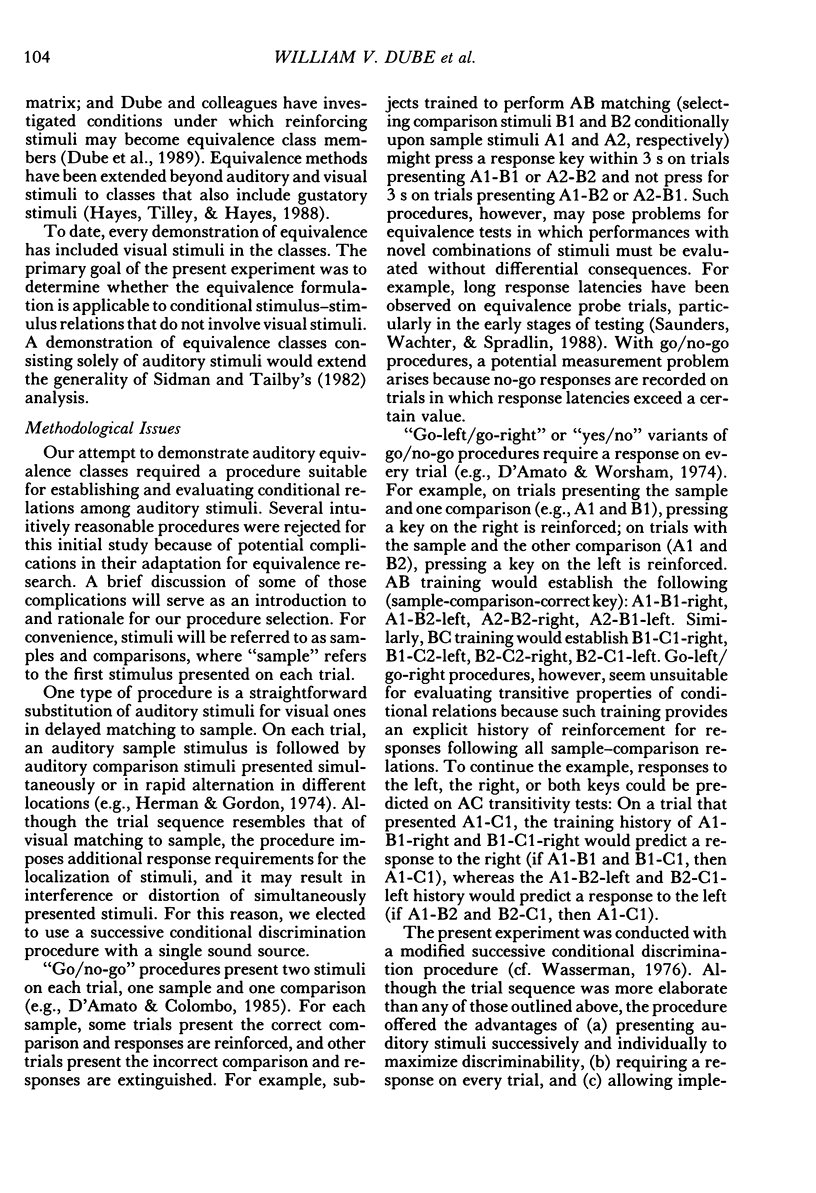
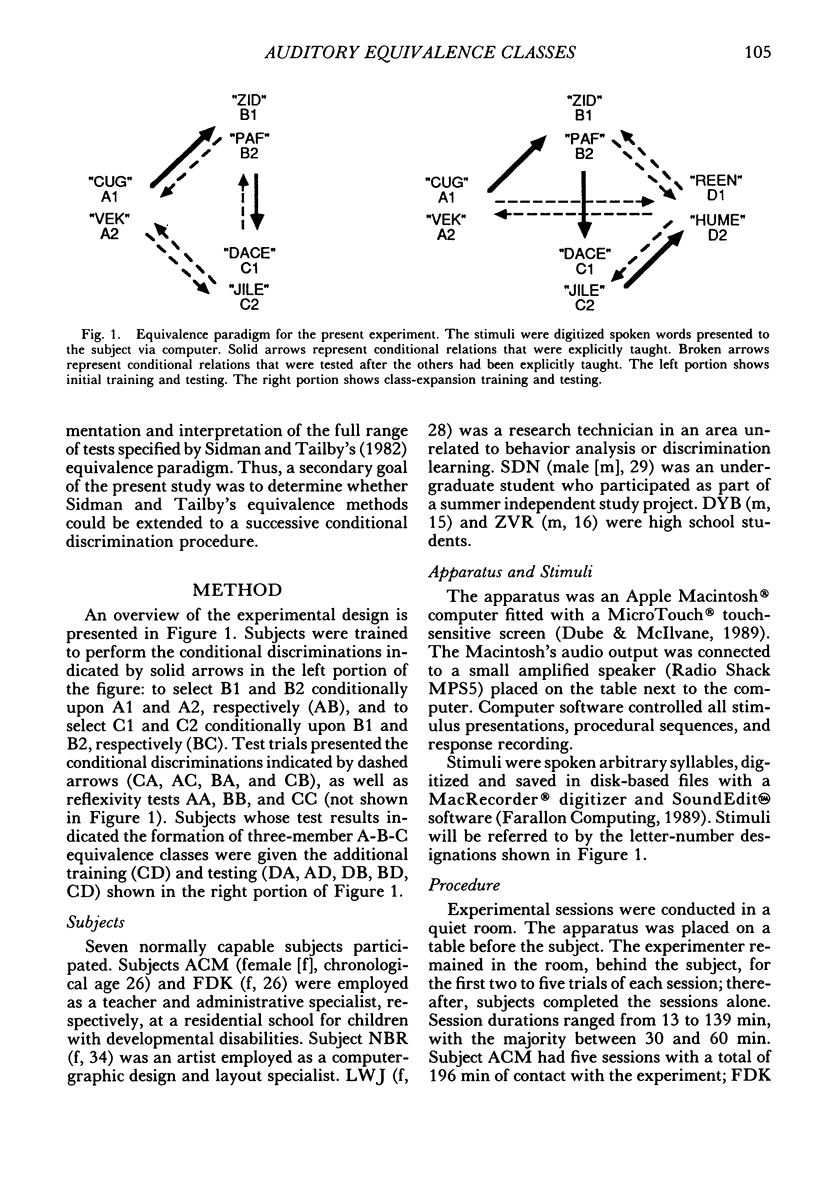
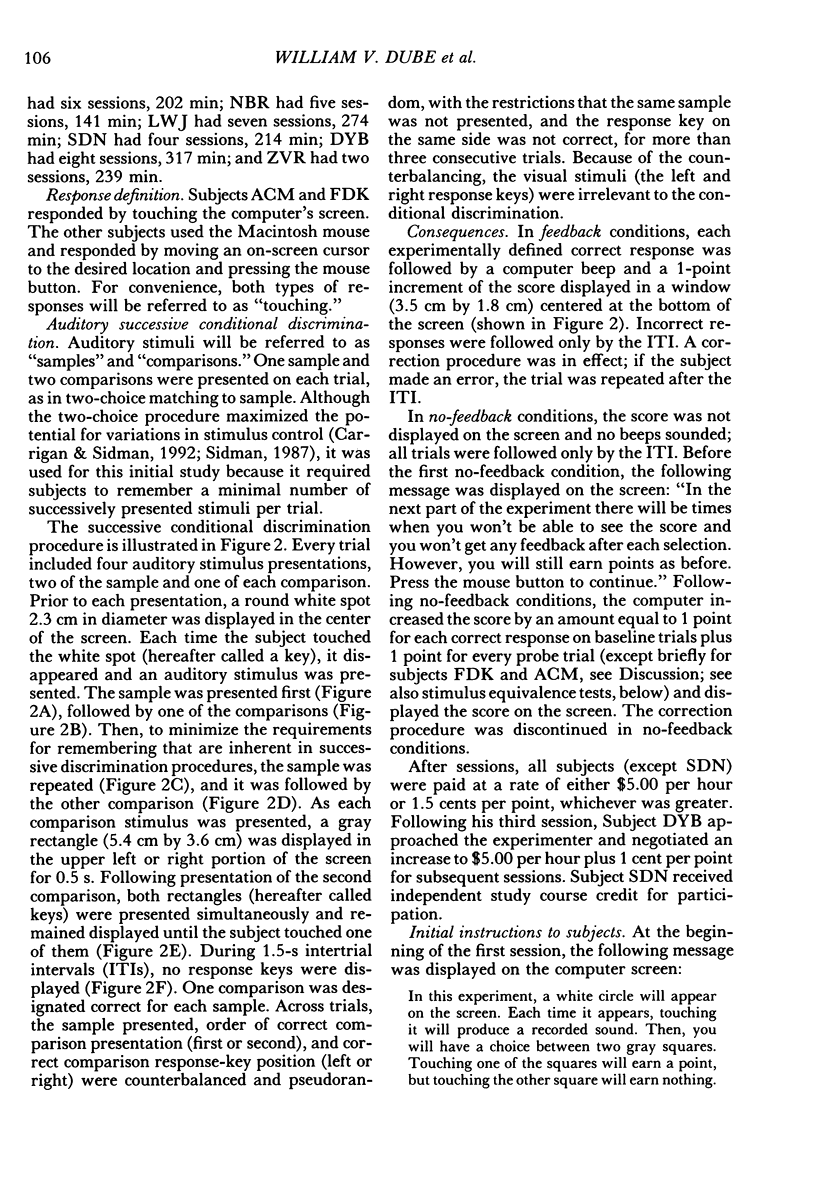
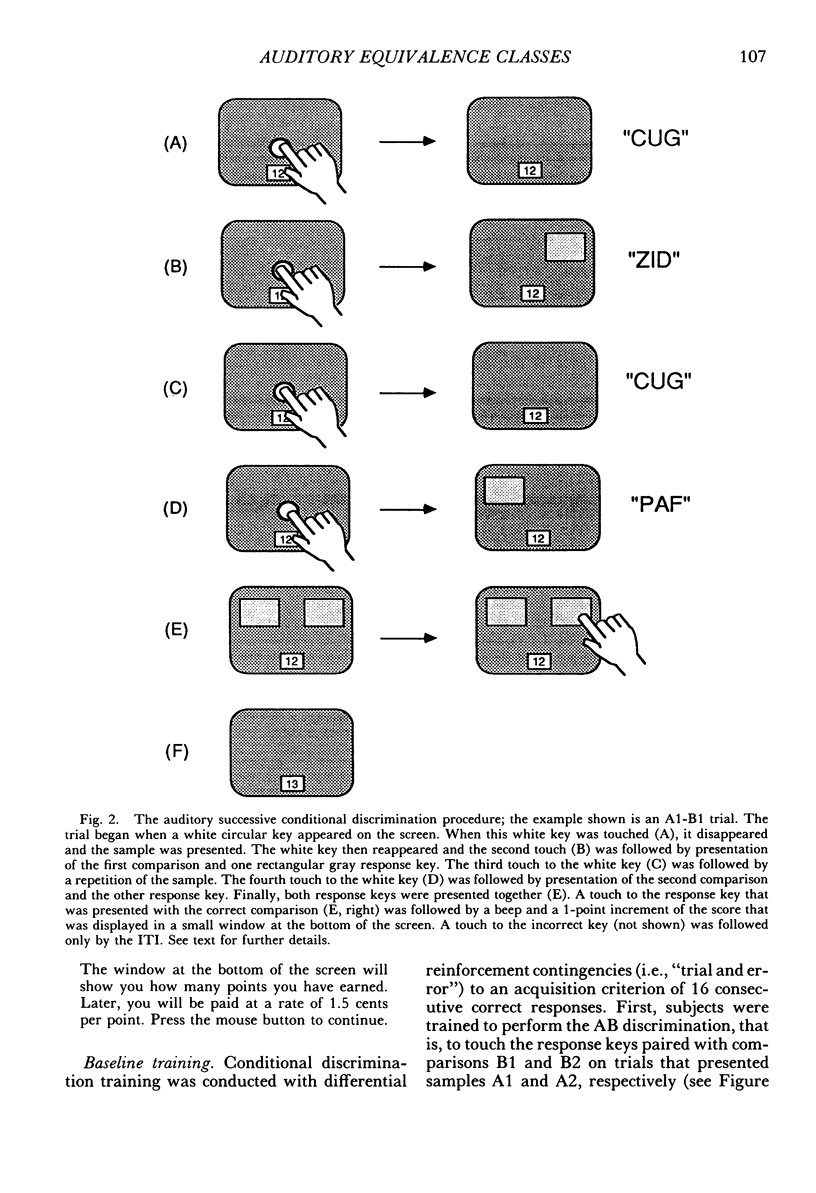
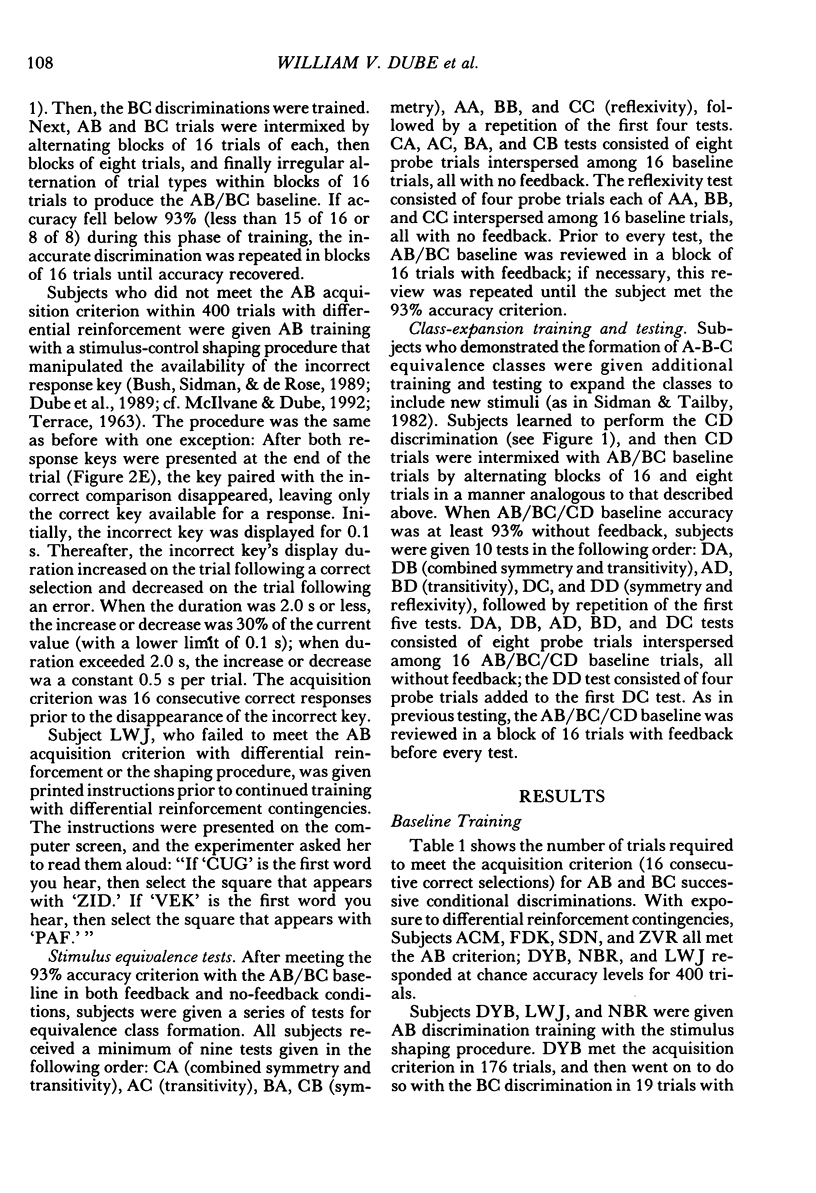
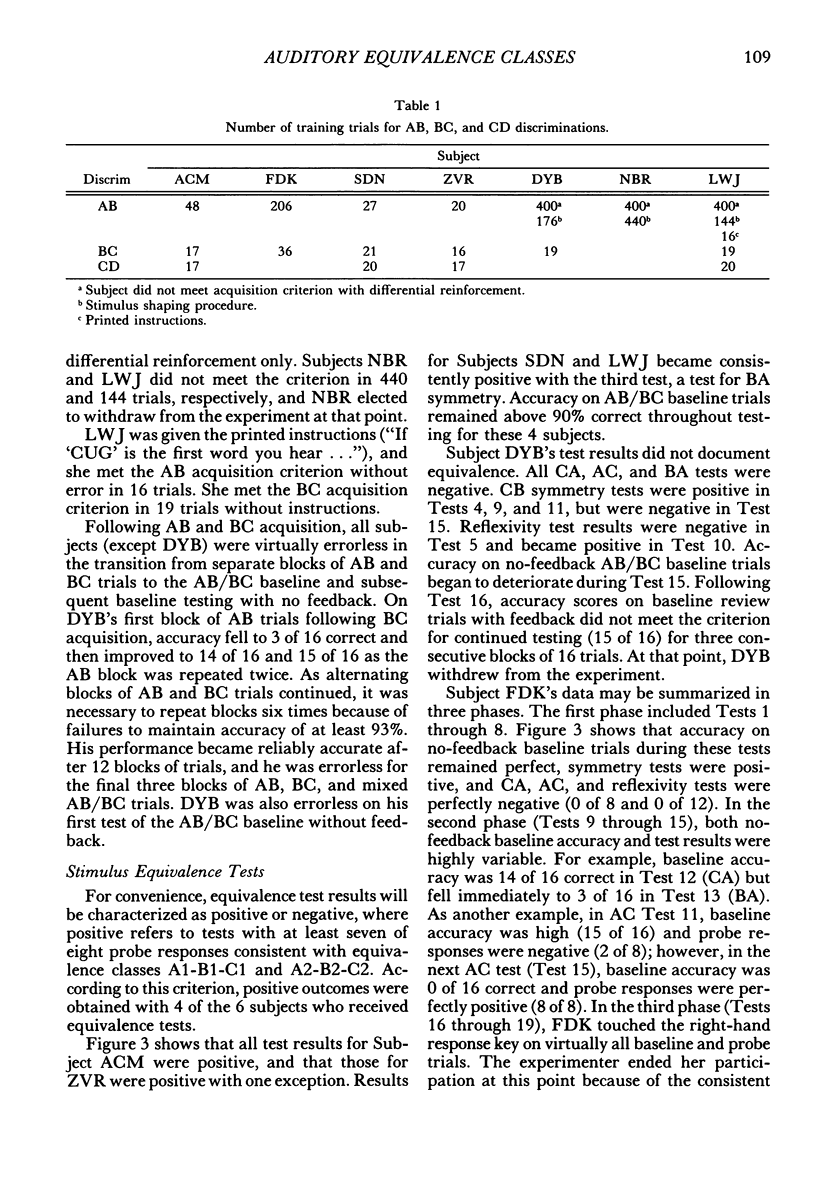
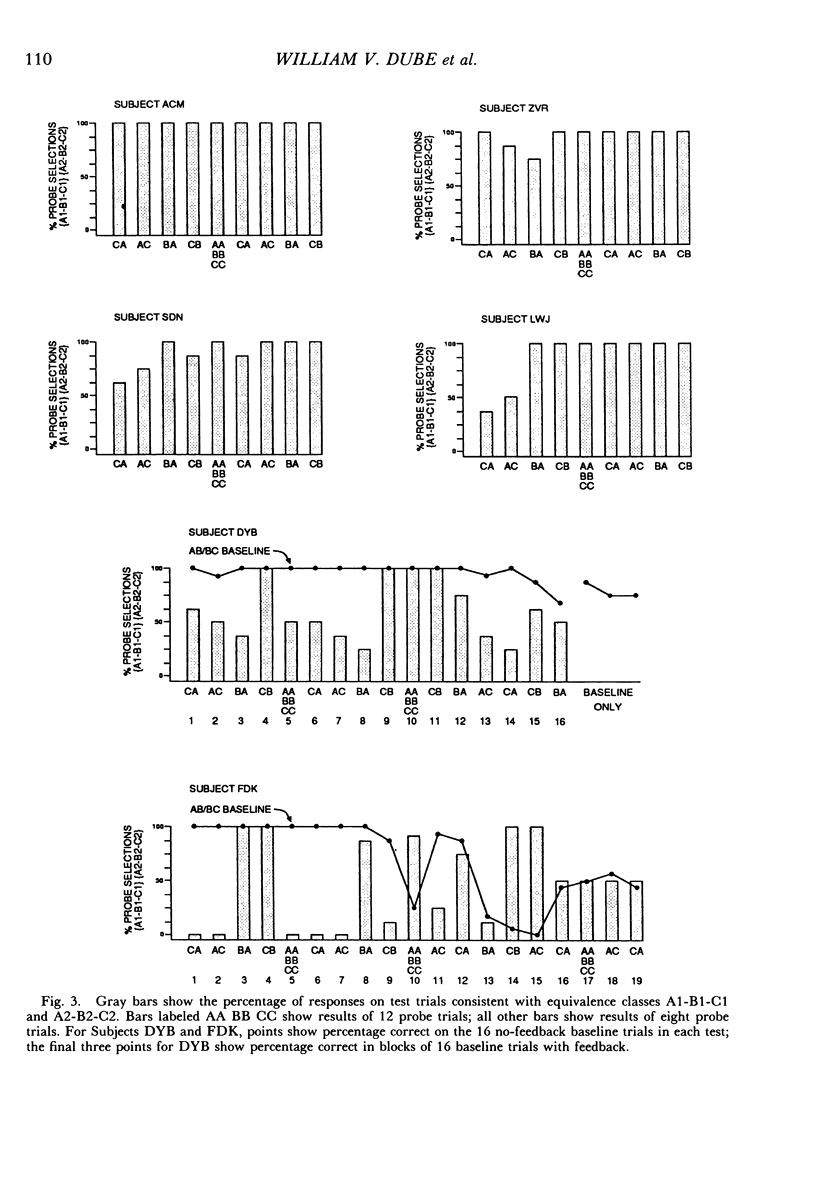
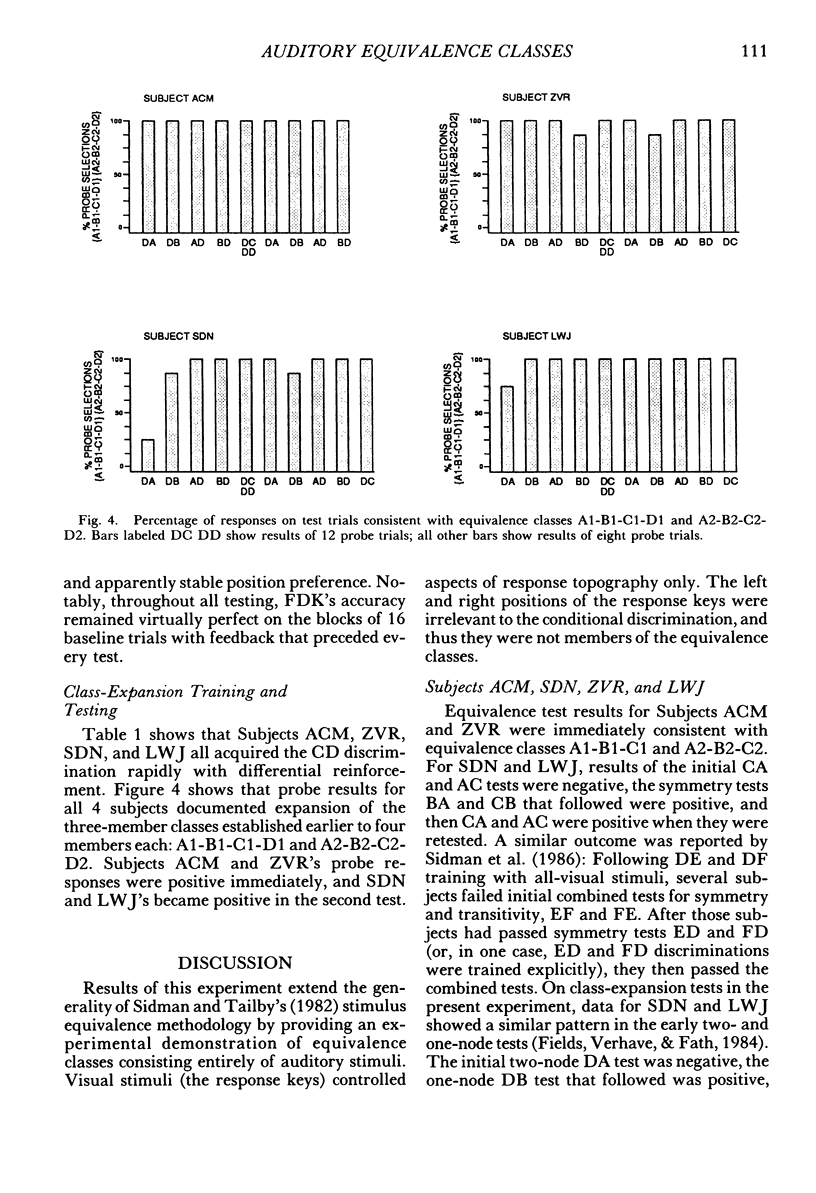
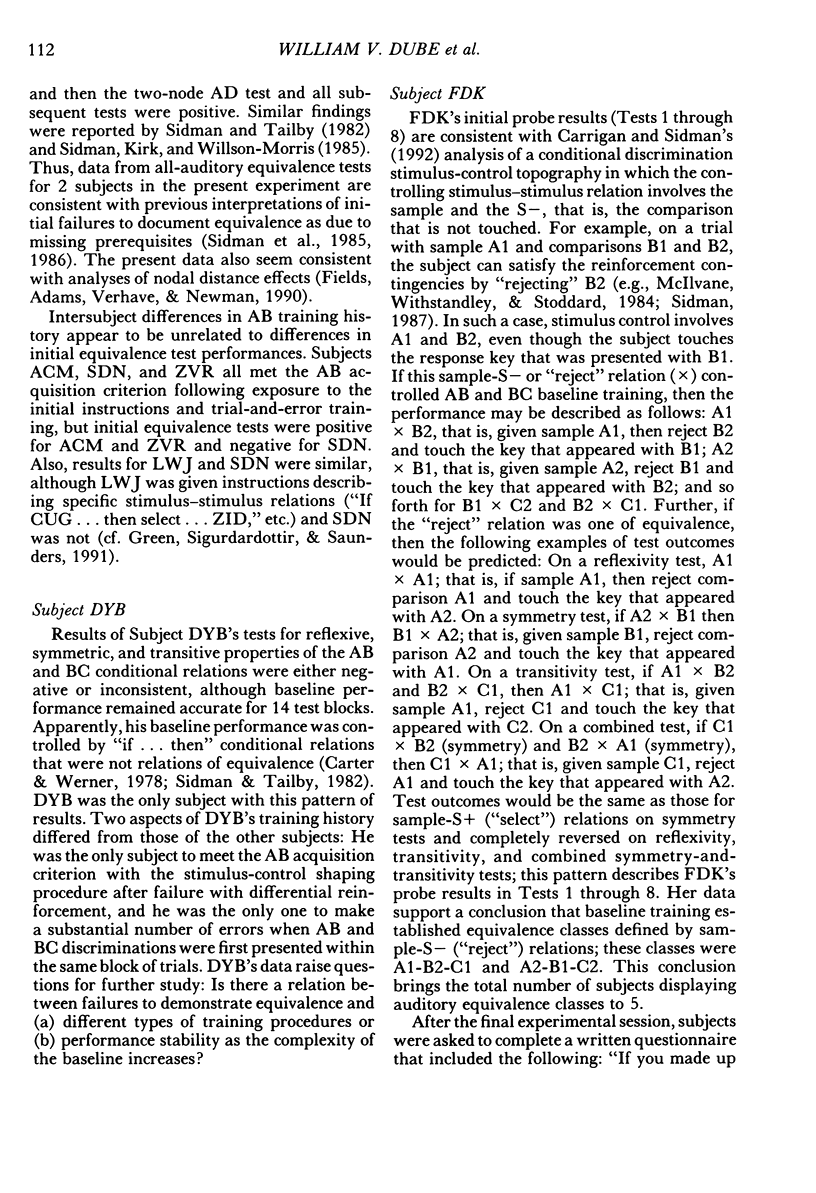

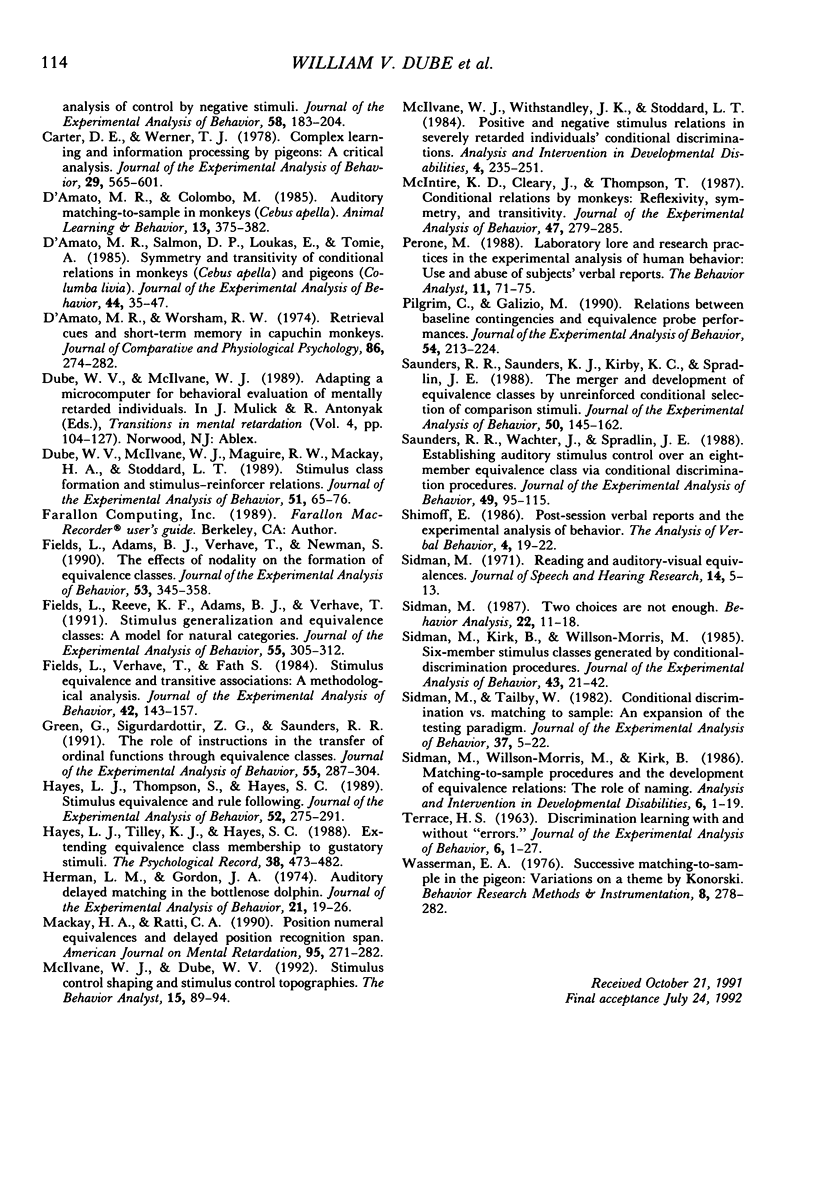
Selected References
These references are in PubMed. This may not be the complete list of references from this article.
- Bush K. M., Sidman M., de Rose T. Contextual control of emergent equivalence relations. J Exp Anal Behav. 1989 Jan;51(1):29–45. doi: 10.1901/jeab.1989.51-29. [DOI] [PMC free article] [PubMed] [Google Scholar]
- Carrigan P. F., Sidman M. Conditional discrimination and equivalence relations: A theoretical analysis of control by negative stimuli. J Exp Anal Behav. 1992 Jul;58(1):183–204. doi: 10.1901/jeab.1992.58-183. [DOI] [PMC free article] [PubMed] [Google Scholar]
- Carter D. E., Werner T. J. Complex learning and information processing by pigeons: a critical analysis. J Exp Anal Behav. 1978 May;29(3):565–601. doi: 10.1901/jeab.1978.29-565. [DOI] [PMC free article] [PubMed] [Google Scholar]
- D'Amato M. R., Salmon D. P., Loukas E., Tomie A. Symmetry and transitivity of conditional relations in monkeys (Cebus apella) and pigeons (Columba livia). J Exp Anal Behav. 1985 Jul;44(1):35–47. doi: 10.1901/jeab.1985.44-35. [DOI] [PMC free article] [PubMed] [Google Scholar]
- Dube W. V., McIlvane W. J., Maguire R. W., Mackay H. A., Stoddard L. T. Stimulus class formation and stimulus-reinforcer relations. J Exp Anal Behav. 1989 Jan;51(1):65–76. doi: 10.1901/jeab.1989.51-65. [DOI] [PMC free article] [PubMed] [Google Scholar]
- Fields L., Adams B. J., Verhave T., Newman S. The effects of nodality on the formation of equivalence classes. J Exp Anal Behav. 1990 May;53(3):345–358. doi: 10.1901/jeab.1990.53-345. [DOI] [PMC free article] [PubMed] [Google Scholar]
- Fields L., Reeve K. F., Adams B. J., Verhave T. Stimulus generalization and equivalence classes: a model for natural categories. J Exp Anal Behav. 1991 May;55(3):305–312. doi: 10.1901/jeab.1991.55-305. [DOI] [PMC free article] [PubMed] [Google Scholar]
- Fields L., Verhave T., Fath S. Stimulus equivalence and transitive associations: A methodological analysis. J Exp Anal Behav. 1984 Jul;42(1):143–157. doi: 10.1901/jeab.1984.42-143. [DOI] [PMC free article] [PubMed] [Google Scholar]
- Green G., Sigurdardottir Z. G., Saunders R. R. The role of instructions in the transfer of ordinal functions through equivalence classes. J Exp Anal Behav. 1991 May;55(3):287–304. doi: 10.1901/jeab.1991.55-287. [DOI] [PMC free article] [PubMed] [Google Scholar]
- Hayes L. J., Thompson S., Hayes S. C. Stimulus equivalence and rule following. J Exp Anal Behav. 1989 Nov;52(3):275–291. doi: 10.1901/jeab.1989.52-275. [DOI] [PMC free article] [PubMed] [Google Scholar]
- Herman L. M., Gordon J. A. Auditory delayed matching in the bottlenose dolphin. J Exp Anal Behav. 1974 Jan;21(1):19–26. doi: 10.1901/jeab.1974.21-19. [DOI] [PMC free article] [PubMed] [Google Scholar]
- Mackay H. A., Ratti C. A. Position-numeral equivalences and delayed position recognition span. Am J Ment Retard. 1990 Nov;95(3):271–282. [PubMed] [Google Scholar]
- McIntire K. D., Cleary J., Thompson T. Conditional relations by monkeys: Reflexivity, symmetry, and transitivity. J Exp Anal Behav. 1987 May;47(3):279–285. doi: 10.1901/jeab.1987.47-279. [DOI] [PMC free article] [PubMed] [Google Scholar]
- Pilgrim C., Galizio M. Relations between baseline contingencies and equivalence probe performances. J Exp Anal Behav. 1990 Nov;54(3):213–224. doi: 10.1901/jeab.1990.54-213. [DOI] [PMC free article] [PubMed] [Google Scholar]
- Saunders R. R., Saunders K. J., Kirby K. C., Spradlin J. E. The merger and development of equivalence classes by unreinforced conditional selection of comparison stimuli. J Exp Anal Behav. 1988 Sep;50(2):145–162. doi: 10.1901/jeab.1988.50-145. [DOI] [PMC free article] [PubMed] [Google Scholar]
- Saunders R. R., Wachter J., Spradlin J. E. Establishing auditory stimulus control over an eight-member equivalence class via conditional discrimination procedures. J Exp Anal Behav. 1988 Jan;49(1):95–115. doi: 10.1901/jeab.1988.49-95. [DOI] [PMC free article] [PubMed] [Google Scholar]
- Sidman M., Kirk B., Willson-Morris M. Six-member stimulus classes generated by conditional-discrimination procedures. J Exp Anal Behav. 1985 Jan;43(1):21–42. doi: 10.1901/jeab.1985.43-21. [DOI] [PMC free article] [PubMed] [Google Scholar]
- Sidman M. Reading and auditory-visual equivalences. J Speech Hear Res. 1971 Mar;14(1):5–13. doi: 10.1044/jshr.1401.05. [DOI] [PubMed] [Google Scholar]
- Sidman M., Tailby W. Conditional discrimination vs. matching to sample: an expansion of the testing paradigm. J Exp Anal Behav. 1982 Jan;37(1):5–22. doi: 10.1901/jeab.1982.37-5. [DOI] [PMC free article] [PubMed] [Google Scholar]
- TERRACE H. S. Discrimination learning with and without "errors". J Exp Anal Behav. 1963 Jan;6:1–27. doi: 10.1901/jeab.1963.6-1. [DOI] [PMC free article] [PubMed] [Google Scholar]


